10K VERSUS 14K GOLD
COMPARE 10KT GOLD TO 14KT GOLD - WHICH KARAT IS BETTER?
This post contains affiliate links. If you use these links to buy something I may earn a commission. Thanks! As an Amazon Associate I also earn from qualifying purchases.
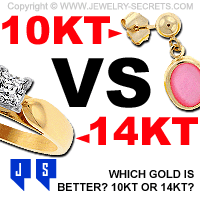
Whether 10K Gold is better than 14K Gold (also written as 10KT and 14KT) is a moot point. It all depends on you and what your priorities are.
You have to ask yourself: Are you more concerned with the Durability of the Gold? The Color of the Gold? The Price of the Gold? Or even Gold Allergies?
There is no easy answer. No right or wrong. Let’s take a closer look at the differences between 10 Karat and 14 Karat (Don’t confuse Karat with Carat as in Diamond Carat Weight) so you can draw your own conclusions…
Gold Content
Pure Gold (or Gold Fineness) is 24K Gold. That’s 99.9% Pure Gold with nothing mixed with it.
Sadly, Pure Gold is too soft to be used for Jewelry. Alloys must be mixed in with the Gold in order to make it durable enough for everyday use. If Gold isn’t strong, it won’t be secure enough to hold in your Gemstones or Diamonds.
The most common Gold used in Jewelry in the USA is 14K Gold.
14K Gold
14K means that 14 parts of it is Gold, and the other 10 parts are Alloys.
In 14K Gold, 58.5% is Gold. Then you have the remaining Alloys roughly broken down like this: 25% Silver and 17% Copper. But often these Alloys also contain a mix of Nickel, Tin, Palladium, Zinc and Manganese.
This mixture of 58.5% Gold gives 14K that nice, rich Gold Luster that everyone loves, while still remaining durable at the same time. It’s the perfect Combination.
14K should be stamped inside your Ring or Jewelry as 14K, 14KT, or even .585, which of course stands for 58.5% Gold.
10K Gold
10K Gold is 10 parts Gold and 14 parts Alloy.
10K is roughly 41.7% Gold, 33% Silver and 25% Copper… As well as other metals like Nickel, Tin, Palladium, Zinc and Manganese.
10K Gold will be stamped as 10K, 10KT or .417 inside your Rings or Jewelry.
Gold Durability
Durability is one of the most important issues when it comes to Gold.
Gold is a fairly soft metal by nature (rated 2.5-3 on the Moh’s Scale of Hardness). Alloys must be mixed with it or else the Jewelry would Bend easily, Ding, Dent, Stretch and Wear down way too fast.
The more Alloys that are added to the Gold, the better.
More Alloys = More Durability!
This is why 10K Gold is more durable than 14K. This is also why a lot of Men’s Rings are made with 10K Gold. Men are rough on their Jewelry and that little extra durability goes a long way.
But…
This is what I don’t understand…
If 10K Gold contains MORE Alloys in it than Gold, how can it still be called Gold? I’ve always pondered that. 14K I can understand. There’s MORE Gold in 14K than Alloys, but 10K??? I don’t get.
The FTC says that in order for an item to be considered GOLD in the states, it MUST contain at least 10 parts Gold (10K). Elsewhere in the World things are different. In France, Gold must be at least 18K (18 parts Gold). Britain it’s 9K. Germany 8K. Remember this if you buy Gold on the Internet (like Ebay). Just because it’s listed as Gold… It may not be.
Also note that other countries may list 14 Karat and 10 Karat as 14 Carat and 10 Carat. The markings and stamps could be misleading.
For durability, 10K is more durable than 14K, but you do sacrifice other things. Things like Color…
Gold Color
Pure Gold is extremely Yellow in tone. Bright Yellow. (For me, TOO Yellow!)
Most people in the US have never seen Pure Gold Jewelry. But if you ventured out of the country you would see a lot of it. Pure Gold is preferred in places like China, India, Asia and Saudi Arabia.
14K is the norm here. It has a nice Gold tone that is more of a Yellow-Orange hue. The color works well with just about any Gemstone or Diamond.
10K is a paler Gold. The less Gold in 10K creates less of a Yellow tone. This makes it appear slightly whiter (See picture above).
Most people at first glance can’t tell the difference between 10k or 14k Gold. This is a great thing for one very important issue…
The Price!
10K Gold is Cheaper!
10K costs less because it has less Gold. Alloys are Cheap!
Most Class Rings sold today are 10K Gold (or their own blend of Alloys). Moving up to 14K Gold could double the price of the item.
So for saving money, 10K is the best way to go.
I will say that often 10K is often frowned upon by customers. Some people feel that 10K Gold means the Jewelry is Cheap! This is because most Cheaper Jewelry is made of 10K Gold. 10K is what keeps the price down. But this doesn’t necessarily mean the Jewelry itself is Cheap. It just helps when cutting corners.
The Cheap Stigma may sway you, but really, it shouldn’t. Once you have it on, most people would never know your Jewelry was 10K versus 14K. I wouldn’t worry about it.
For me, there is only one huge downfall to 10K Gold…
Gold Allergies
Because 10K Gold contains MORE Alloys in it like Silver, Copper and Nickel, the odds of having Allergies with that metal is enhanced.
It’s a fact that 12% of the people are allergic to Alloys (especially Nickel). These Alloys can react with your skin and cause lifelong allergies or skin irritations (like red rashes).
Many people cannot wear 10K Gold because of this. They can sometimes wear 14K Gold or higher (because it has less Alloys), but 10K, NO WAY! I know this very well because my Mom is one of those people!
It all depends on you and your body. Everyone is different.
White Gold
White Gold (10K or 14K) is identical to Yellow Gold except for a few key points…
1) It has Zinc and Nickel added to the metal to make it appear Whiter (There is no TRUE White Gold).
2) It’s usually Rhodium Plated to make it look even Whiter!
Because White Gold has extra Alloys mixed in with the metal, White Gold tends to be more durable than Yellow Gold. This is why most Engagement Rings use White Gold for the Heads and Prongs.
White Gold looks Bright, White and it’s more Secure.
Just note that the Rhodium Plating eventually wears off and you’ll need to get it replated at least every couple of years.
Is one Gold better than the other?
Is 10K better than 14K Gold?
NO!
If you can wear 10K Gold, go for it. You may see a slight difference in color, but it is more Durable and Cheaper.
As long as you don’t develop a Gold Allergy, then I don’t think it’s a big issue.
Wear it. Be happy! Save Money!
Both 10K and 14K are ideal for Jewelry…
It all comes down to you! :)




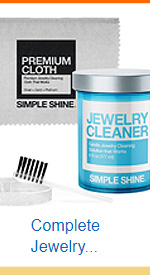
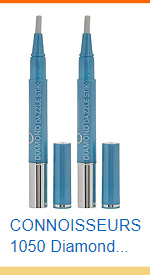
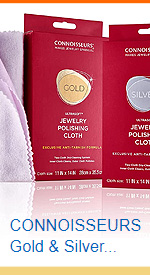

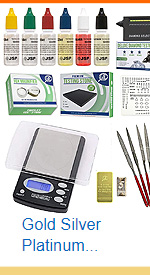

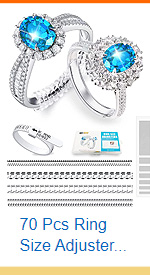

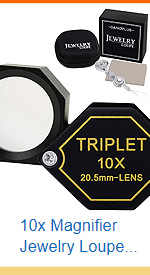





Thank you very much for the information still not clear about the stamp 10kt why the T? On 10KT
Just an abbreviation for Karat. No real reason why. :)
Thank so much! I have a question, 10K SKAO OR SKOL, WHAT DOES IT MEAN?
I appreciate your reply.
Marsha
I wish I had found this article a week ago.
After 4 years of wearing my white gold wedding rings I suddenly gained a reaction and couldn’t wear them. I would get a red rash and it would make my skin peel and blister and became very itchy.
I traded my white gold rings in last week for what the jeweler told me would be better being a 10k Gold ring set. After a few days, the gold has made my finger black.
The only thing I’m not understanding is why its only happening on the one finger. If i swap the rings to my other hand, its perfectly fine.
Is there anything that can be done to help prevent these reactions?
I never wear my rings when handling chemicals etc.
Is there a such thing as ND10K inside a ring, curious
What does 14K GLK mean?
What does 14k M@ mean?
Thanks for the lesson on the difference between 10k white gold and 14k white gold. I couldn’t care less about what people think on the subject of 10k or 14k. If my stones are better in stronger, I’d opt for 10k!
I have read 2 of these articles so far. This one and the one about is a ESP worth it on a jewelry purchase. I am learning so much. I really appreciate all the information I have read and dont have to ask my friend who is making a ring or ask someone at the jewelry counter who may or may not know the right answer.